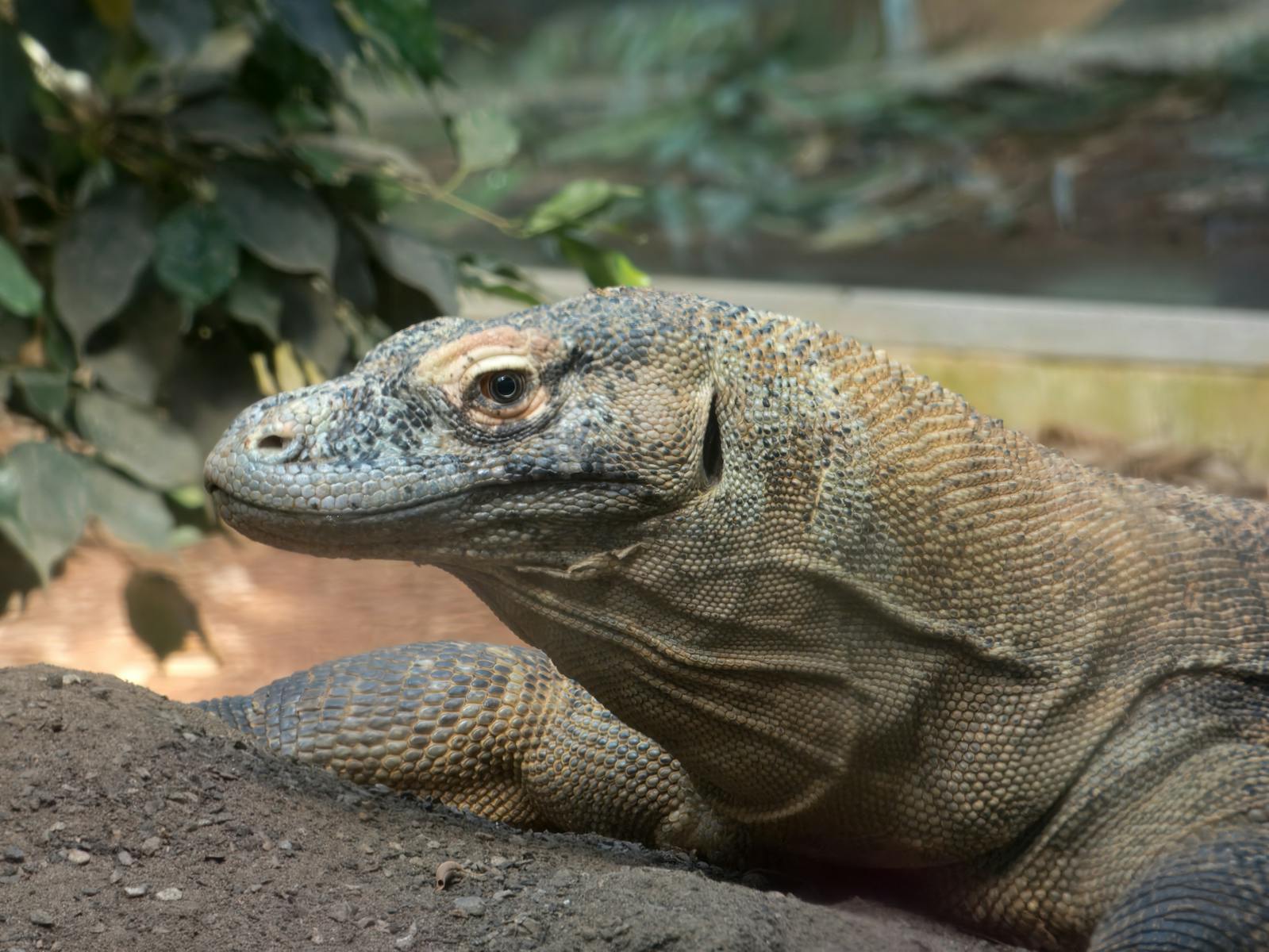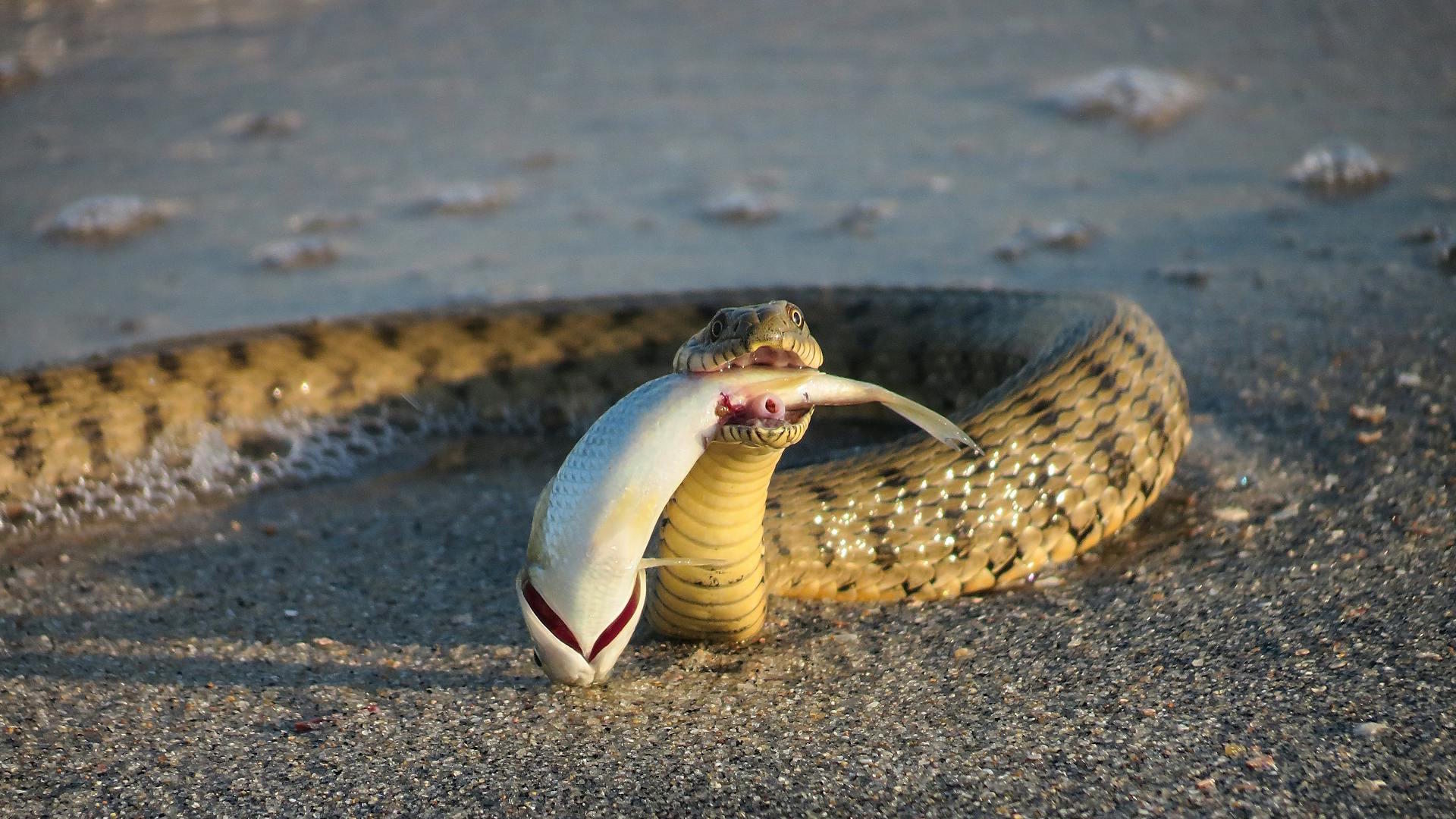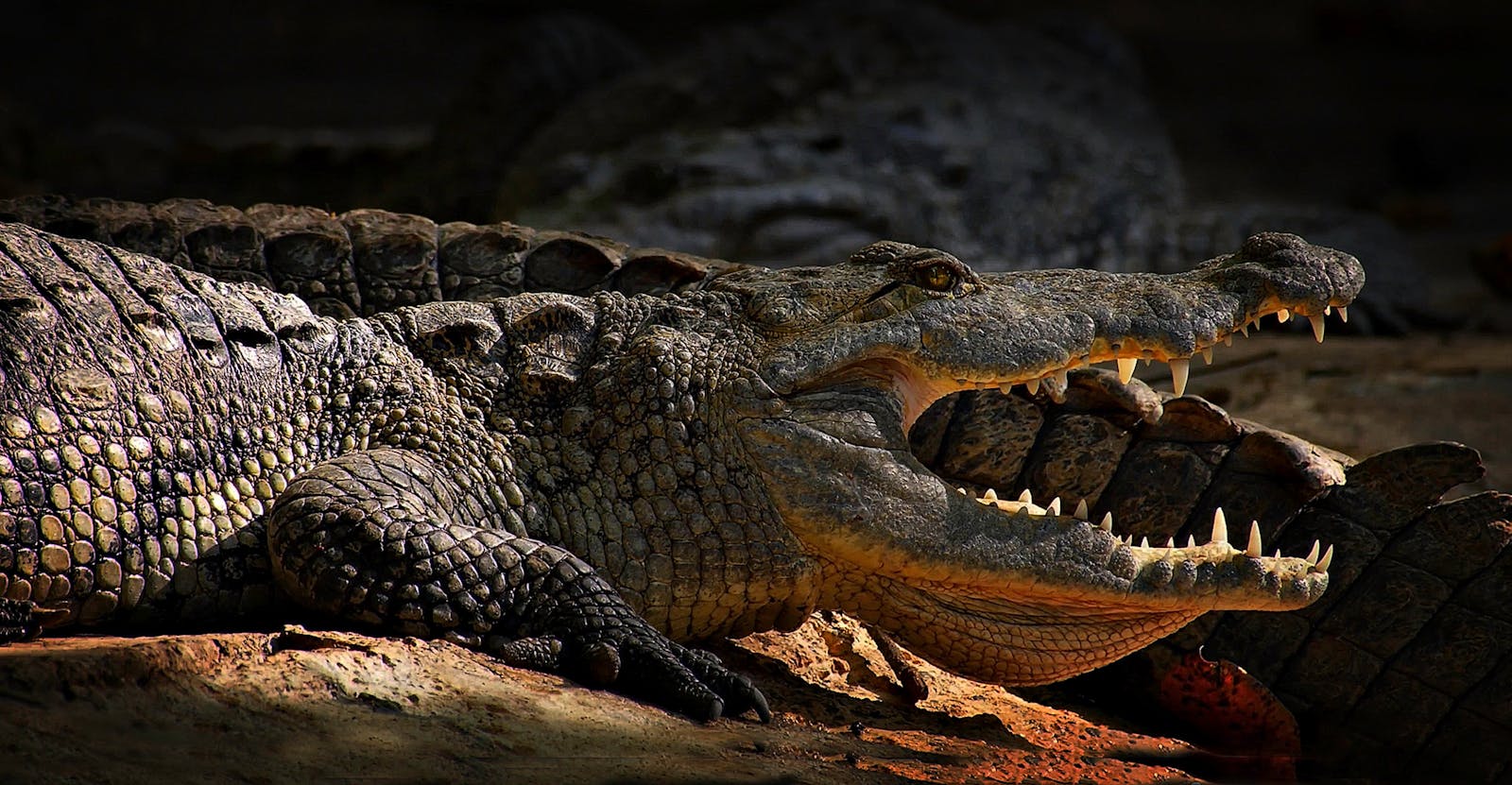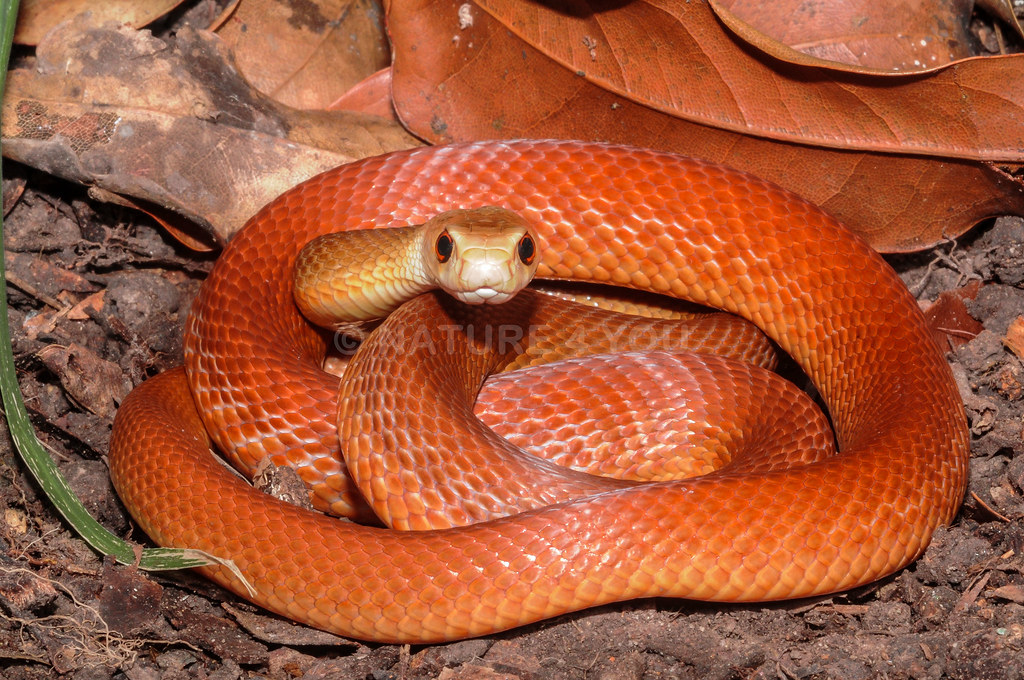In the remote islands of Indonesia, an ancient predator possesses one of nature’s most extraordinary hunting abilities. The Komodo dragon, with its massive frame and deadly bite, harbors a sensory superpower that seems almost mythical: the ability to detect blood from miles away. This remarkable adaptation has helped these apex predators dominate their ecosystem for millions of years. While many believe these reptiles can smell blood from incredible distances, the science behind their sensory capabilities reveals a fascinating and complex reality that goes beyond simple olfaction. Let’s explore how these living dragons track their prey with such astonishing precision and what makes their sensory system one of the most sophisticated in the animal kingdom.
The Legendary Komodo Dragon
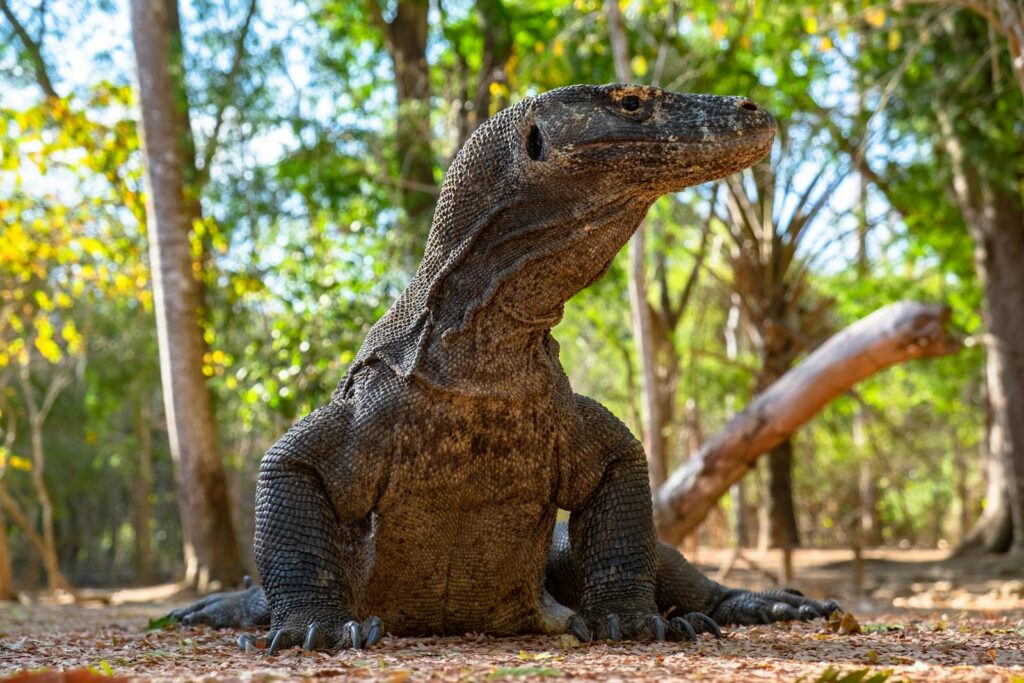
Komodo dragons (Varanus komodoensis) are the world’s largest living lizards, growing up to 10 feet long and weighing more than 300 pounds. Native exclusively to five islands in Indonesia, these ancient reptiles have evolved in isolation for millions of years, developing unique hunting strategies and sensory adaptations. Their fearsome reputation is well-earned—they are apex predators capable of taking down prey much larger than themselves, including water buffalo, deer, and pigs. Unlike most reptiles, Komodo dragons actively hunt rather than ambush, requiring sophisticated sensory systems that allow them to track prey over vast distances through diverse terrain.
The Myth vs. Reality of Blood Detection
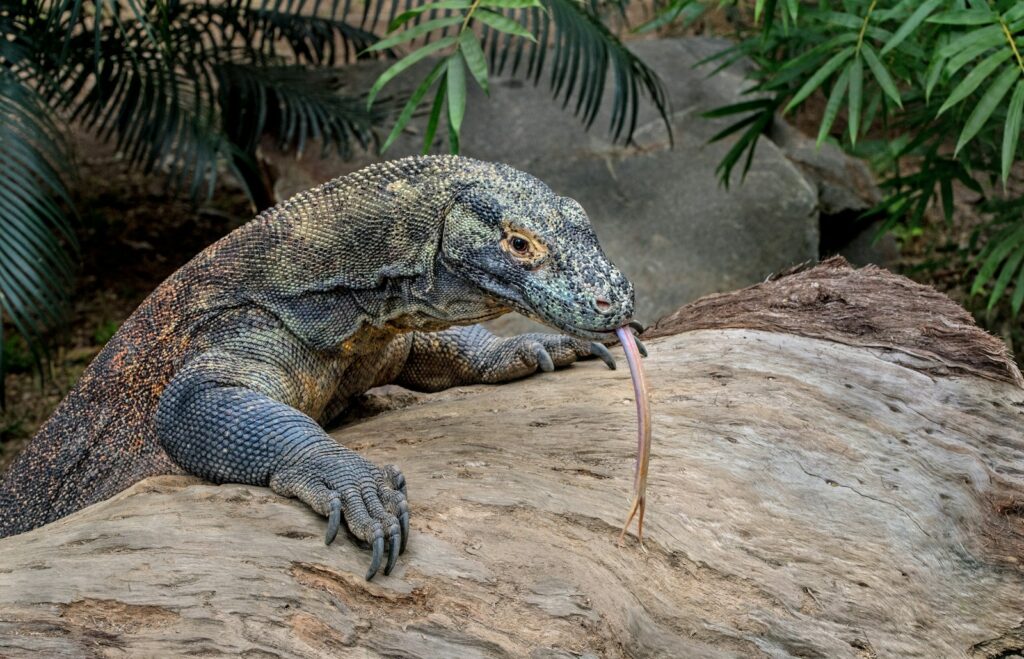
The popular claim that Komodo dragons can smell blood from miles away is somewhat exaggerated, though based on genuine biological capabilities. While these reptiles do possess extraordinary olfactory abilities, the actual maximum distance for blood detection is likely closer to 2.5 miles (about 4 kilometers) under ideal conditions. This is still remarkably impressive compared to most other animals. The perception of their abilities has been amplified in popular culture, partly because witnesses have observed dragons converging on injured animals from seemingly impossible distances. Scientific studies have confirmed their exceptional chemosensory abilities while providing a more nuanced understanding of how these senses actually function.
The Vomeronasal Organ: Their Secret Weapon

The key to the Komodo dragon’s remarkable sensing abilities lies primarily in an organ that humans don’t possess—the vomeronasal organ (VNO), also known as Jacobson’s organ. Located in the roof of the mouth, this specialized sensory organ is dedicated to detecting chemical signals and pheromones. Unlike the regular olfactory system that detects airborne particles, the vomeronasal organ specializes in analyzing chemical compounds. When a Komodo dragon flicks its forked tongue, it’s collecting chemical particles from the air and ground, which are then delivered to this organ for analysis. The information gathered provides the dragon with detailed data about potential prey, including species identification, direction of travel, and even the health status of the animal.
The Remarkable Forked Tongue
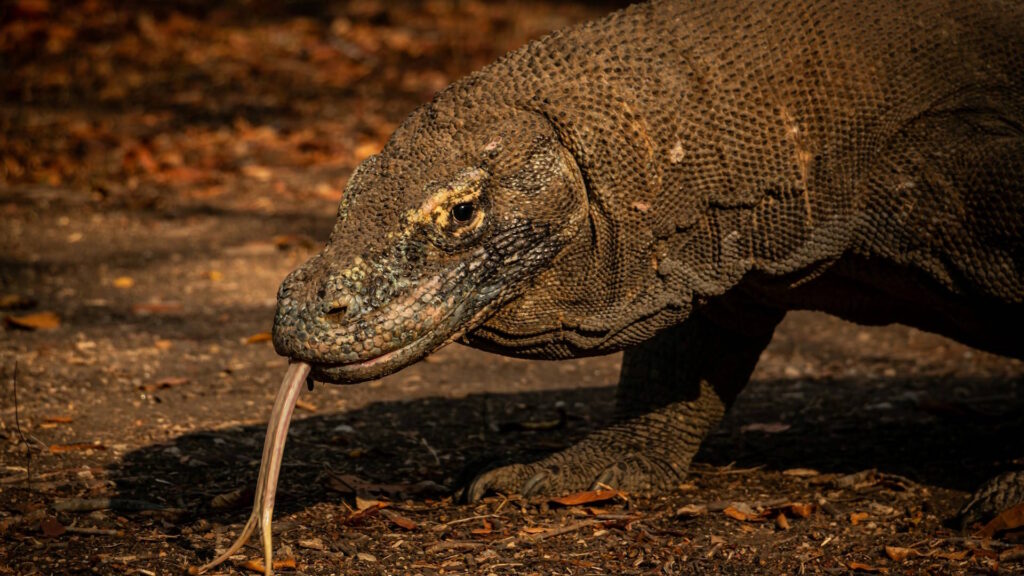
The Komodo dragon’s tongue is perhaps its most visible and distinctive sensory tool. The deeply forked design serves a crucial function in chemical detection, allowing for sophisticated directional sensing. When the lizard flicks its yellow forked tongue into the air, each fork collects scent particles independently. This bifurcated design enables the brain to compare the concentration of particles from each fork, creating a gradient that indicates the direction of the scent source. Komodo dragons can flick their tongues up to 12 times per minute when actively tracking prey. This constant sampling provides continuous updates on the location of blood trails or injured animals, allowing the predator to follow prey even when visual contact is lost.
Specialized Scent Receptors

Komodo dragons possess an exceptionally high number of olfactory receptors compared to other reptiles, estimated to be dozens of times more numerous than those found in humans. These specialized cells are located within the nasal cavity and vomeronasal organ, each equipped to bind with specific chemical compounds. Research has shown that Komodo dragons have receptors particularly sensitive to the compounds found in blood and decomposing flesh. The concentration of these specialized receptors explains why they can detect even microscopic traces of blood in their environment. Some studies suggest they can detect blood diluted to one part per million, making them capable of finding injured prey that shows no visible signs of bleeding to the human eye.
The Science of Chemoreception
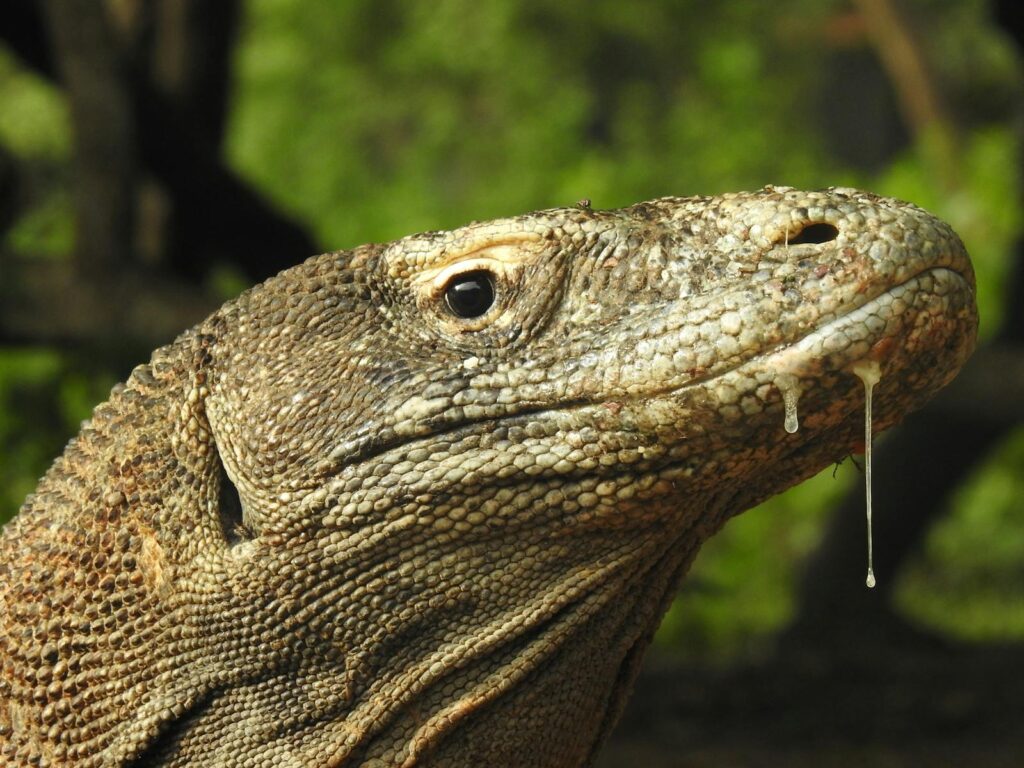
The process by which Komodo dragons detect blood and other scents is called chemoreception, and these reptiles have evolved one of the most sophisticated chemoreception systems on earth. When a dragon flicks its tongue, it collects volatile chemical compounds from the air and ground. These compounds contain information about everything in the environment, including potential prey. The tongue delivers these chemical samples to the vomeronasal organ, where specialized sensory epithelia translate the chemical information into neural signals. These signals travel along the vomeronasal nerves directly to the accessory olfactory bulb in the brain, which processes this information separately from regular smell. This dedicated neural pathway allows for extremely precise chemical analysis, providing the dragon with a detailed chemical “map” of its surroundings.
Detecting Carrion from Great Distances
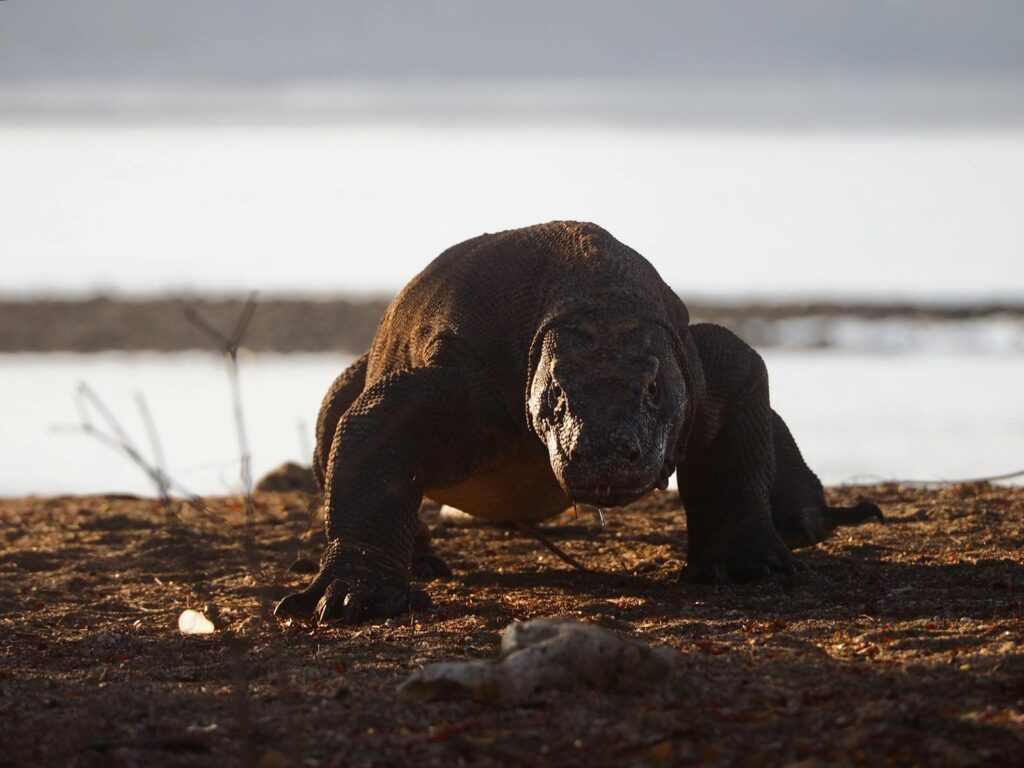
Komodo dragons are not just hunters but also efficient scavengers, with an ability to detect carrion from extraordinary distances. This adaptation is particularly valuable in their island habitat, where food resources can be scarce. Their scent receptors are specifically tuned to detect the compounds released during the decomposition process, such as cadaverine and putrescine. These chemical compounds can be carried by wind currents for miles, especially in the open landscapes of the Indonesian islands. Researchers have documented cases where multiple Komodo dragons converged on a carcass from different directions and distances of up to 5 miles, demonstrating the impressive range of their chemosensory abilities.
How Weather Affects Their Sensing Abilities
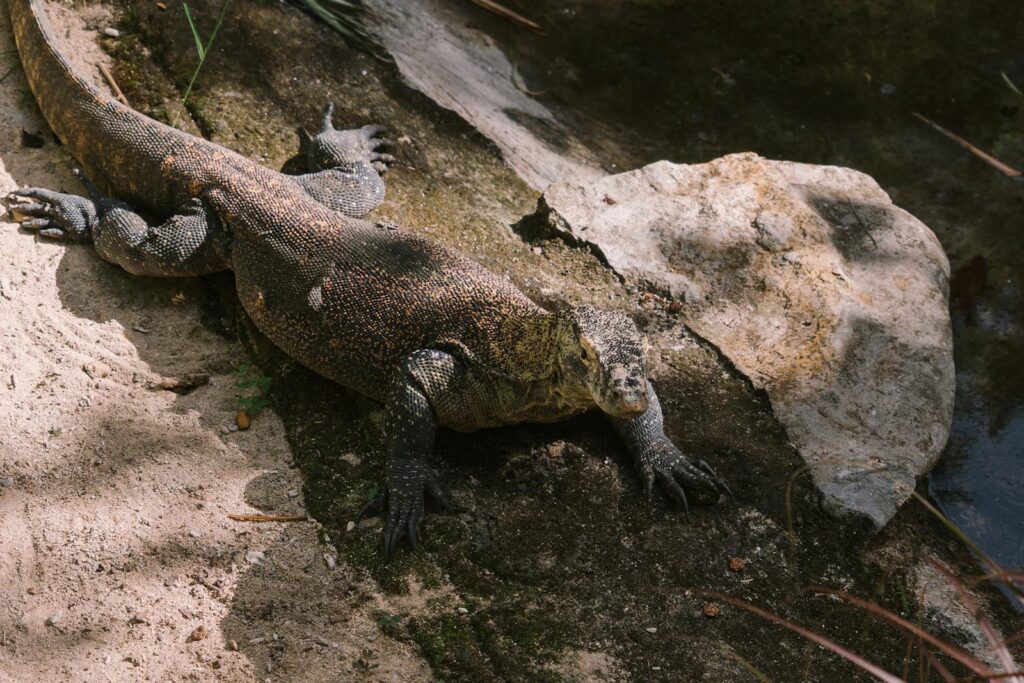
The effectiveness of a Komodo dragon’s scent detection varies significantly with environmental conditions, particularly weather patterns. Humid conditions generally enhance their ability to detect blood and other scents, as moisture helps carry chemical compounds through the air. Wind direction plays a crucial role, as scent particles are carried downwind from their source. On particularly hot, dry days, scent molecules may not disperse as effectively, potentially reducing detection range. Conversely, immediately after rainfall, the increase in humidity can create ideal conditions for long-distance scent detection. This environmental sensitivity explains why Komodo dragons may be more active hunters during certain weather conditions, adapting their behavior to maximize their sensory advantages.
Integration with Other Senses
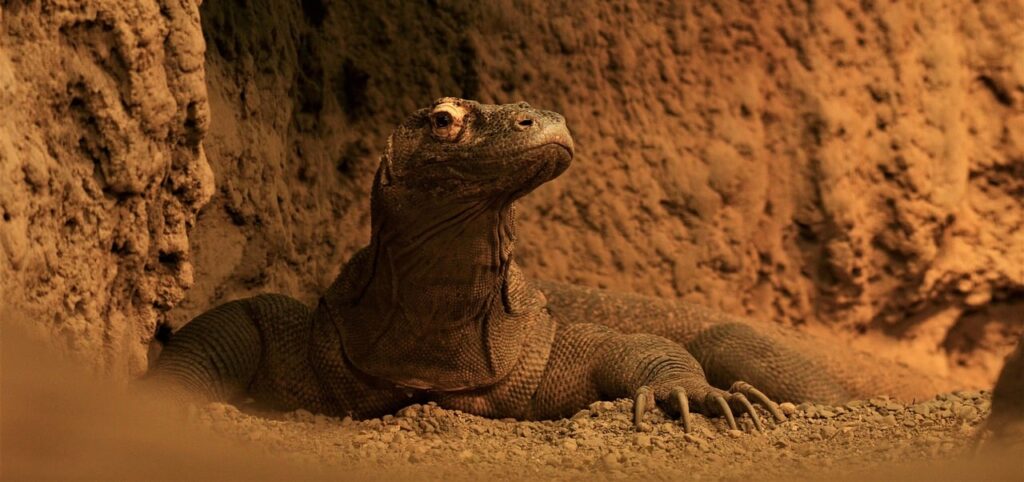
While their chemosensory abilities receive the most attention, Komodo dragons rely on a sophisticated integration of multiple senses when hunting. Their vision is quite good, particularly for detecting movement, with color vision believed to be limited but functional. They possess acute hearing that complements their chemical sensing, allowing them to detect prey movements from considerable distances. Perhaps most surprisingly, Komodo dragons have pressure sensors along their jaws that can detect the subtle vibrations of animals moving nearby. This sensory integration creates a comprehensive awareness of their environment that few other predators can match. When tracking injured prey, they seamlessly combine chemosensory information with visual tracking and sound detection to maintain pursuit over long distances and varied terrain.
Evolutionary Advantages of Blood Detection
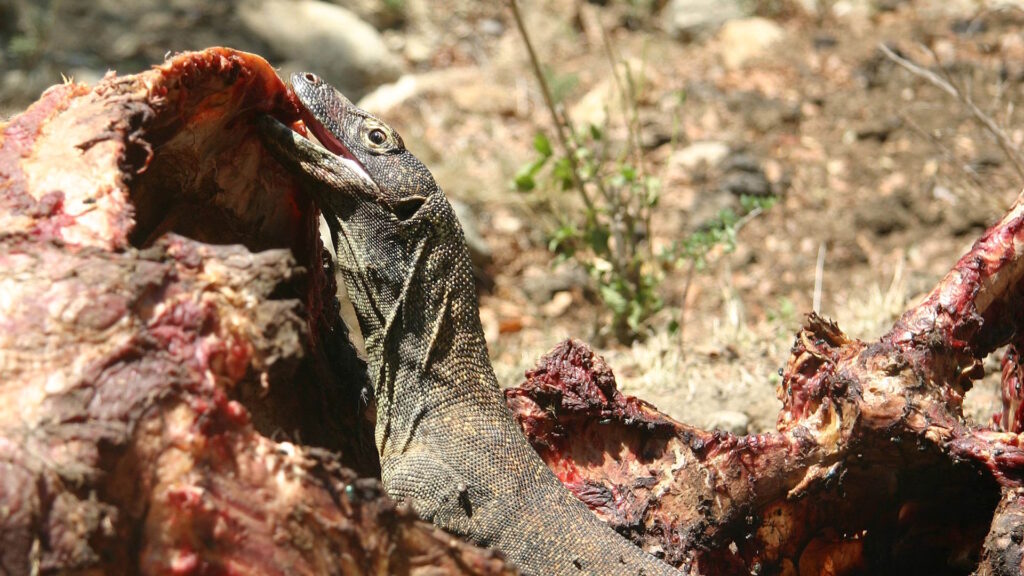
The extraordinary blood-detection abilities of Komodo dragons represent millions of years of evolutionary adaptation to their unique ecological niche. As the apex predator on their islands, they evolved in an environment with limited resources where efficient hunting was essential for survival. The ability to detect injured prey from great distances provides a significant energy conservation advantage, allowing them to focus their hunting efforts on targets more likely to be captured. This adaptation also supports their patience-based hunting strategy, where they often bite large prey and then track them for days as the victim succumbs to blood loss, infection, or the venom-like compounds in the dragon’s saliva. Without their remarkable scent detection abilities, this strategy would be impossible, highlighting how sensory evolution has shaped their entire hunting ecology.
Comparison to Other Predators’ Sensing Abilities
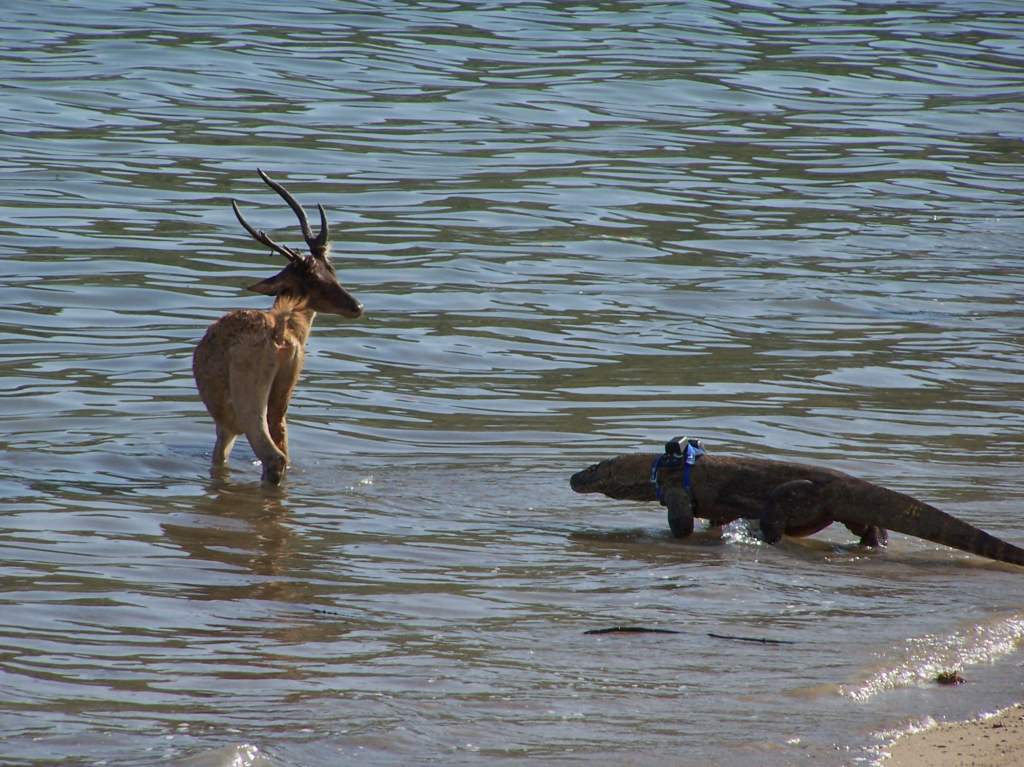
When compared to other apex predators, the Komodo dragon’s chemosensory abilities stand out as exceptional. Sharks, famous for their ability to detect blood in water, can sense blood at concentrations of one part per million—similar to Komodo dragons, but only within water. Wolves and other canids have impressive scent detection but typically track prey within ranges measured in hundreds of yards rather than miles. Birds of prey rely primarily on vision rather than scent. Perhaps the closest comparison comes from other monitor lizards, which share similar vomeronasal organs but generally have fewer scent receptors and less sophisticated neural processing. This comparison highlights how the Komodo dragon has taken a reptilian sensing system and enhanced it to extraordinary levels, creating one of nature’s most effective tracking systems.
Research Challenges and New Discoveries
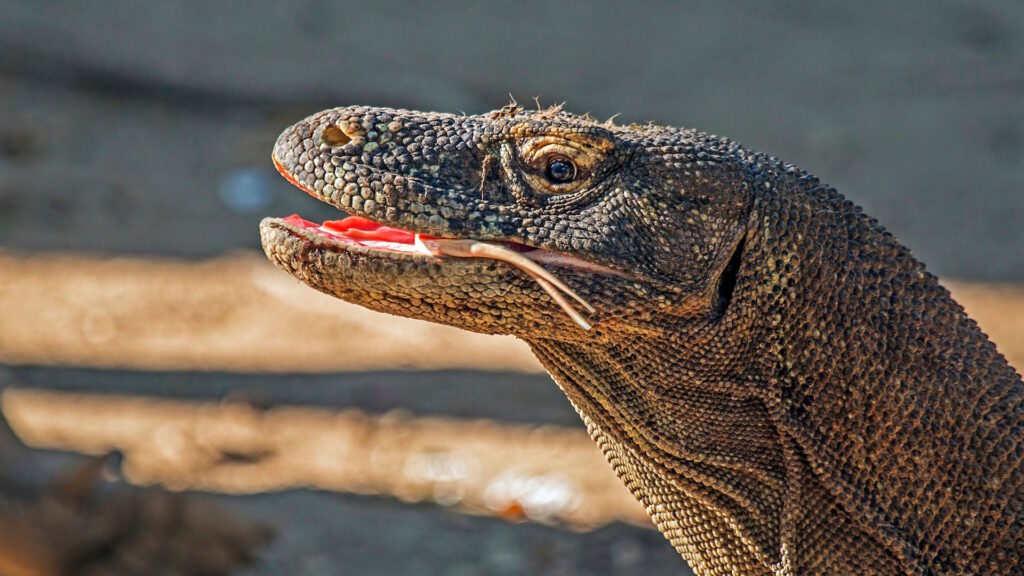
Studying the sensory abilities of Komodo dragons presents significant challenges for researchers. Their endangered status limits invasive research, while their remote habitat makes field studies logistically difficult. Most of our current understanding comes from observational studies, comparative anatomy, and limited laboratory tests with captive specimens. Recent advances in neuroimaging and molecular biology are offering new insights into how their brain processes chemical information. A particularly exciting area of current research involves mapping the genetic basis for their specialized scent receptors, which could have applications in developing artificial “electronic noses” for medical diagnostics or security applications. As technology advances, our understanding of these remarkable sensory adaptations continues to deepen, revealing even more sophisticated mechanisms than previously understood.
Conservation Implications
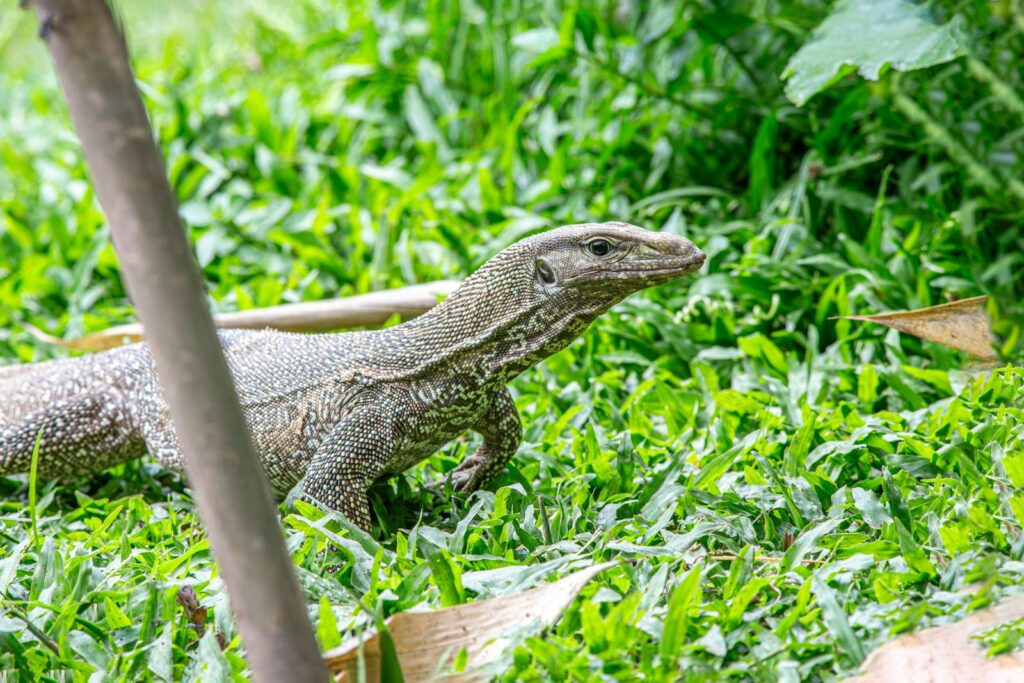
Understanding the sensory world of Komodo dragons has important implications for their conservation. With fewer than 4,000 individuals remaining in the wild, these ancient predators face numerous threats, including habitat loss, poaching, and climate change. Their specialized sensory adaptations, while remarkable, also make them vulnerable to environmental disruptions that might affect their ability to locate prey. Conservation efforts must consider how human activities might impact not just their physical habitat but also their sensory environment. For example, increased boat traffic and tourism could potentially disrupt the chemical signals they rely upon. By appreciating the sophisticated sensory world these animals inhabit, conservation strategies can be developed that better protect their entire ecological needs, helping ensure these living dragons continue to thrive in their island kingdoms.
Conclusion
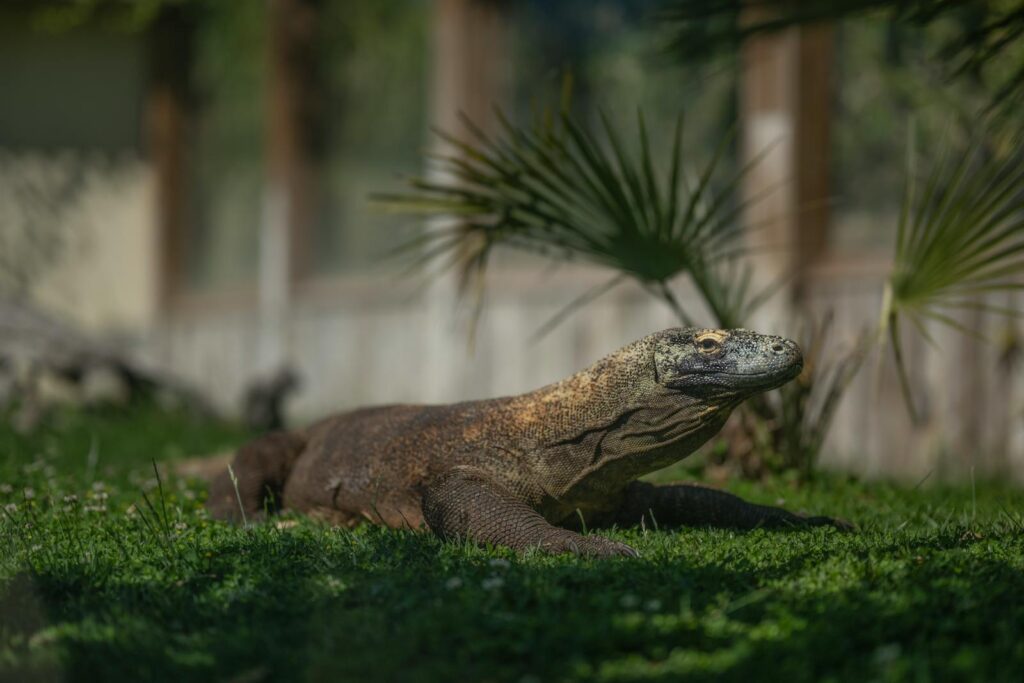
The Komodo dragon’s ability to detect blood from great distances represents one of nature’s most sophisticated sensing systems, finely tuned through millions of years of evolution. While the popular claim of “smelling blood from miles away” contains elements of truth, the reality involves a complex integration of specialized organs, neural pathways, and behavioral adaptations that together create an extraordinary tracking capability. As we continue to study these remarkable reptiles, we gain not only insights into their unique biology but also a deeper appreciation for the diverse ways that animals perceive the world around them. In the case of the Komodo dragon, that world is mapped primarily through chemical signals, creating a sensory reality vastly different from our own but perfectly adapted to their role as the apex predators of their island domain.

